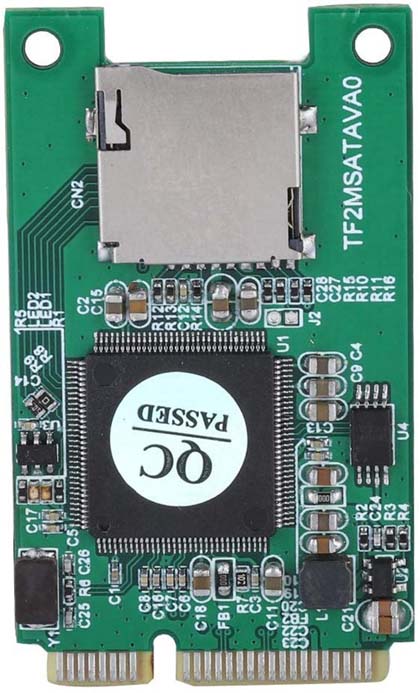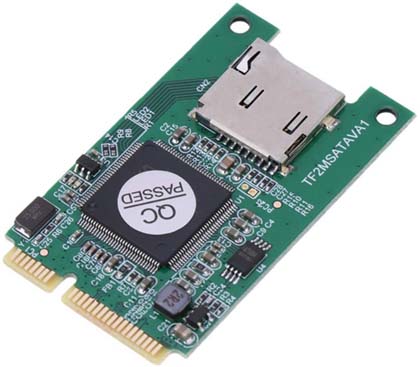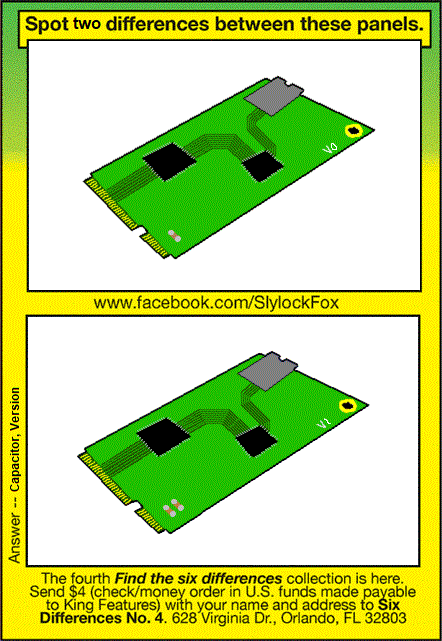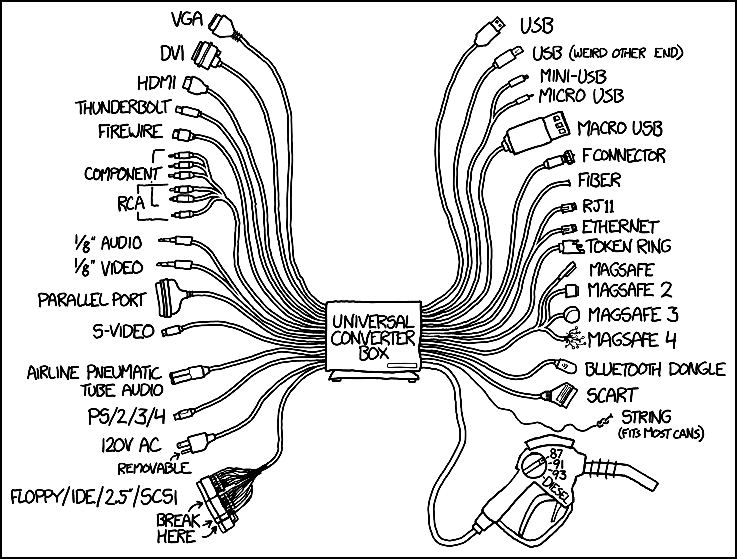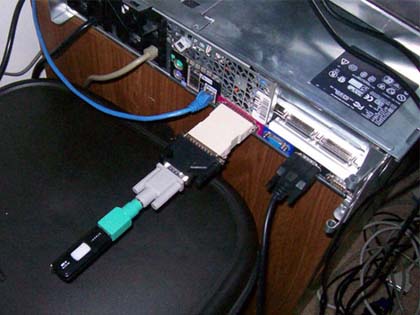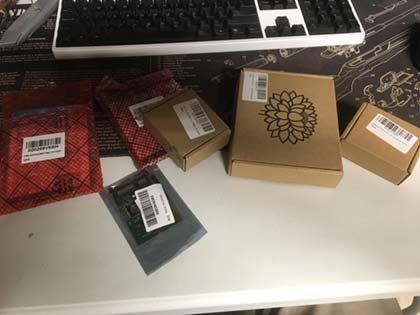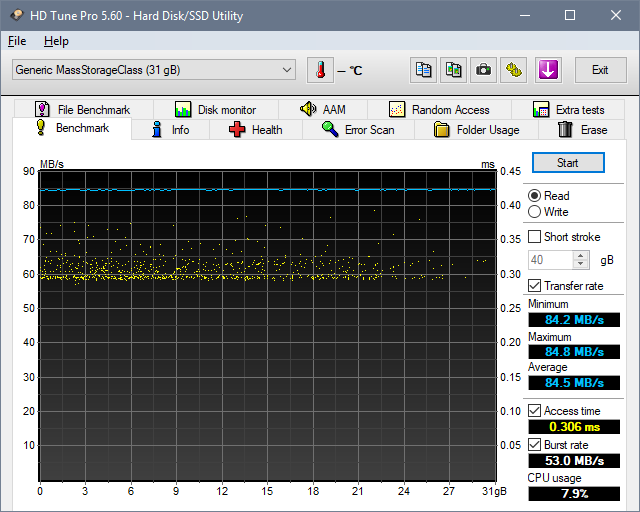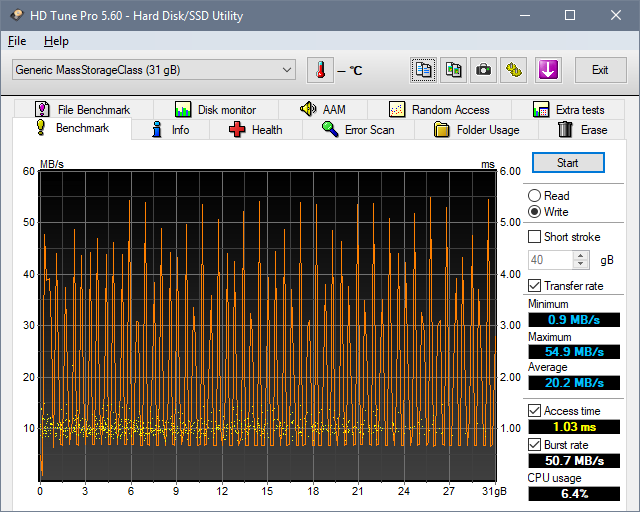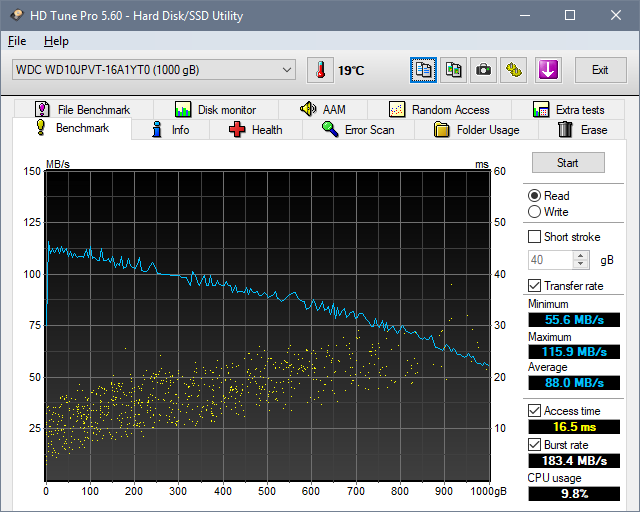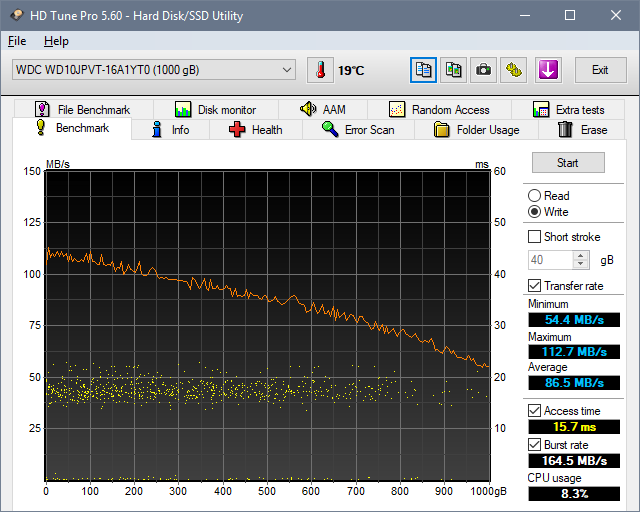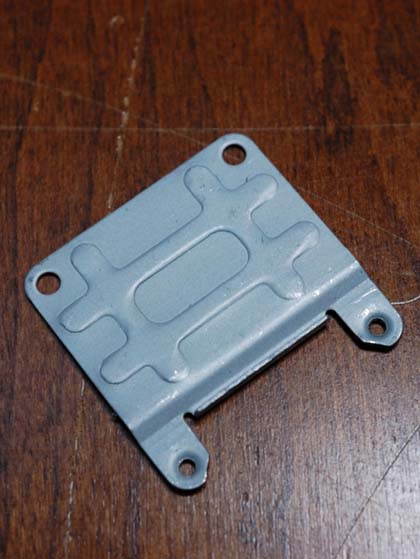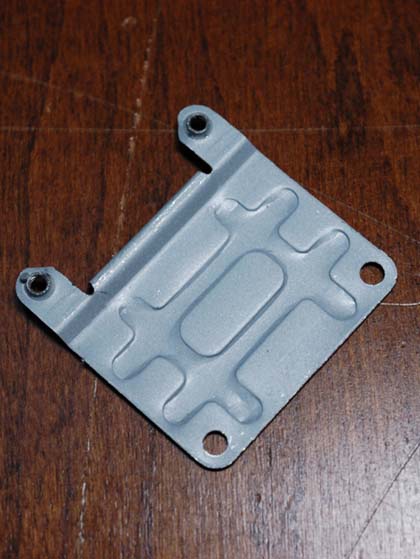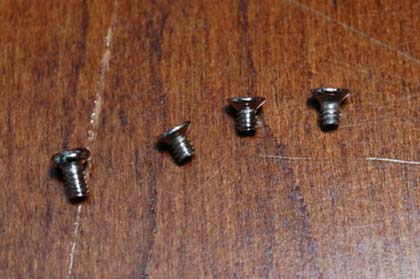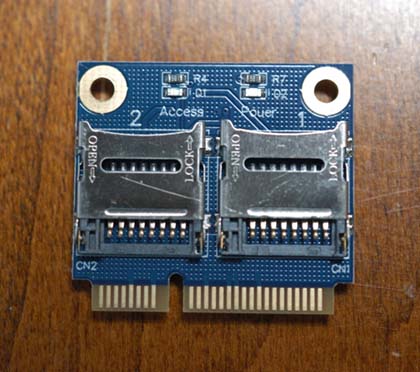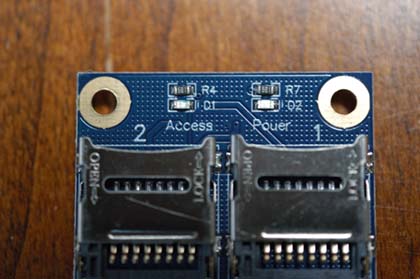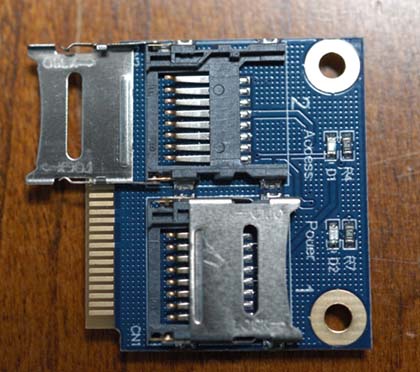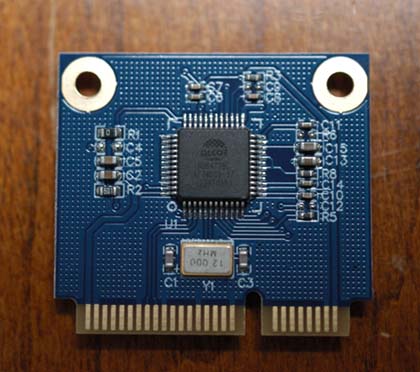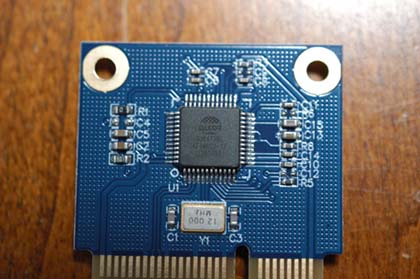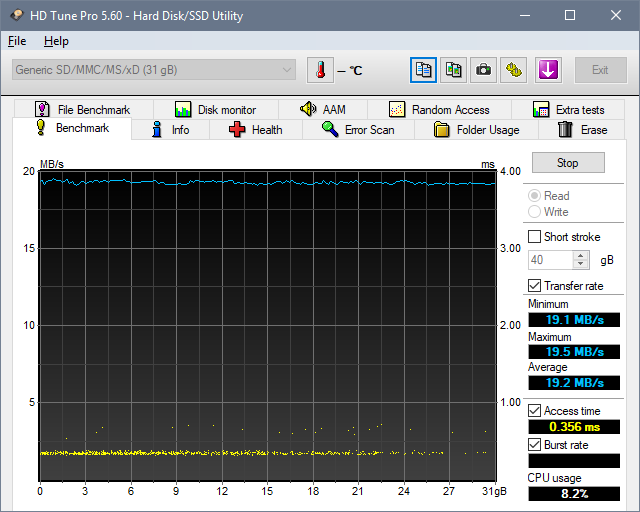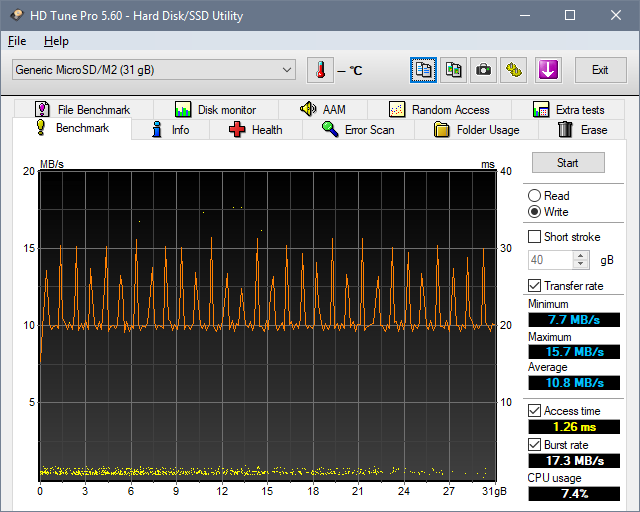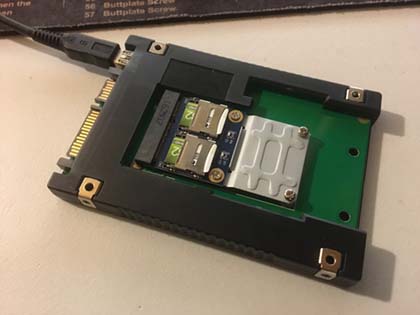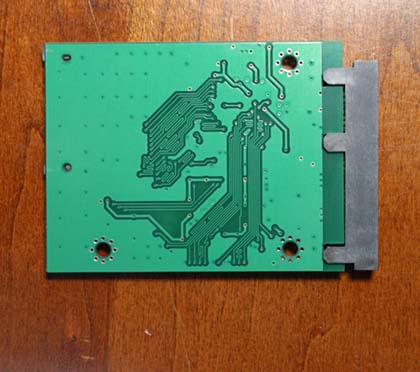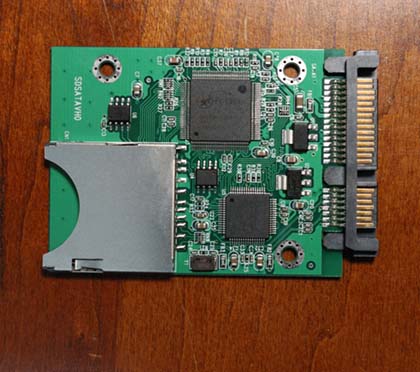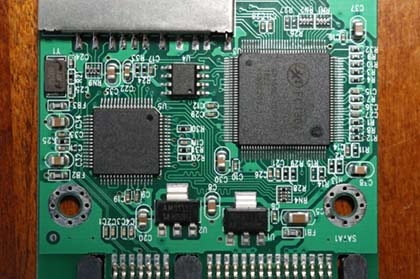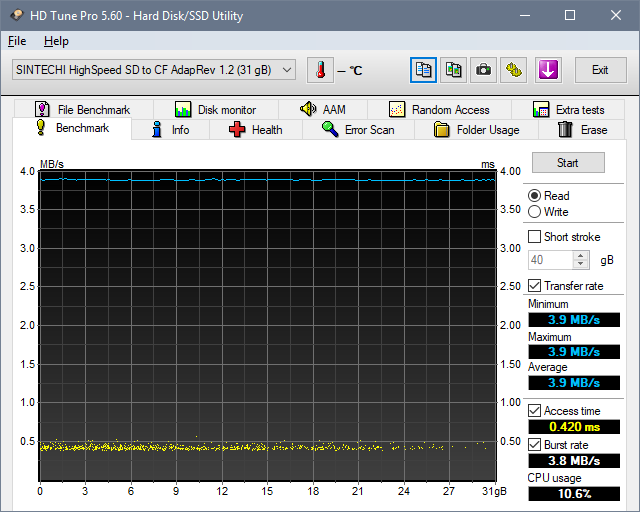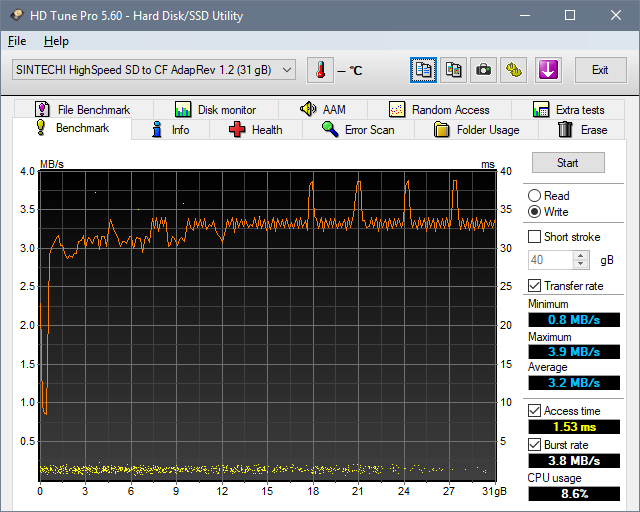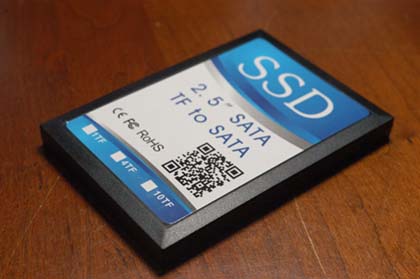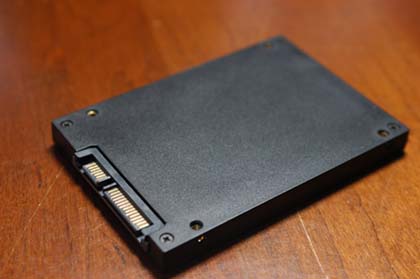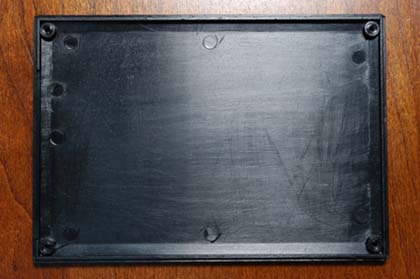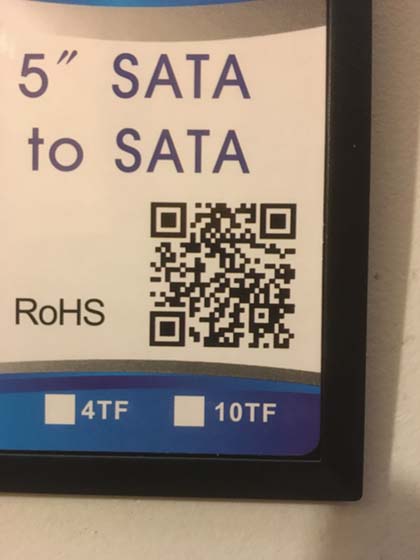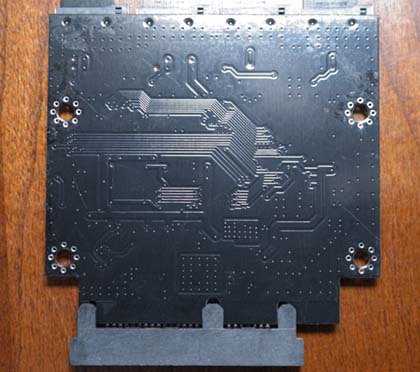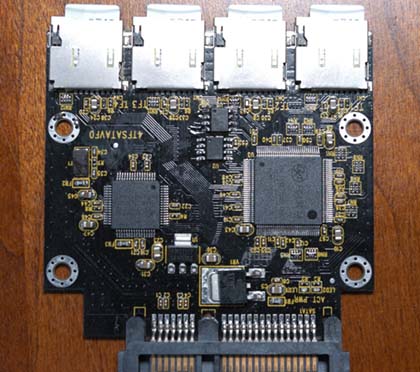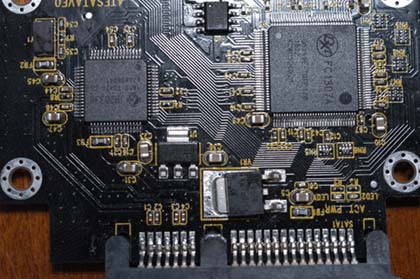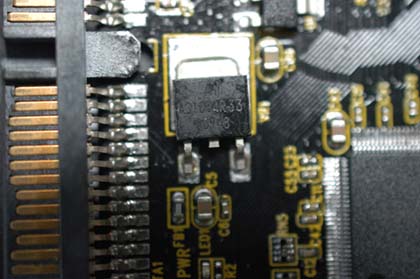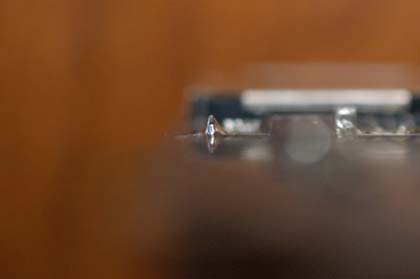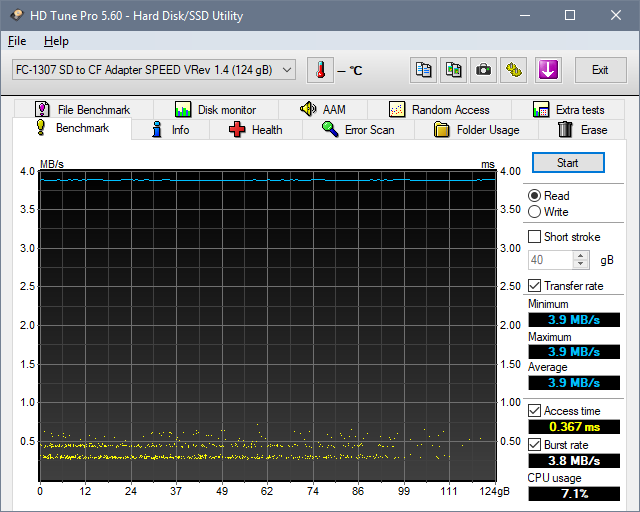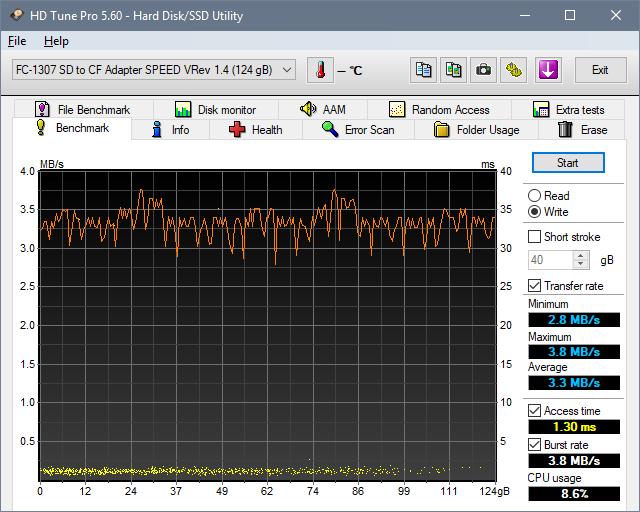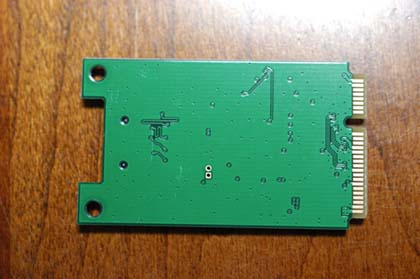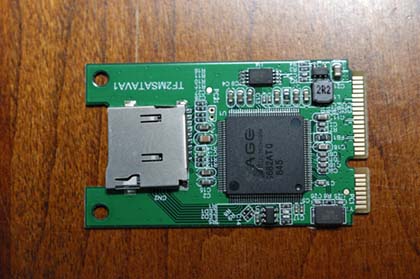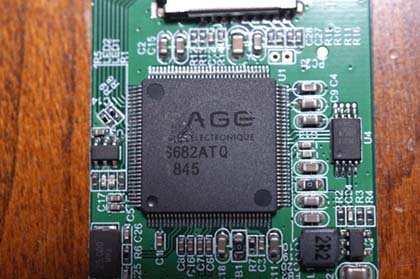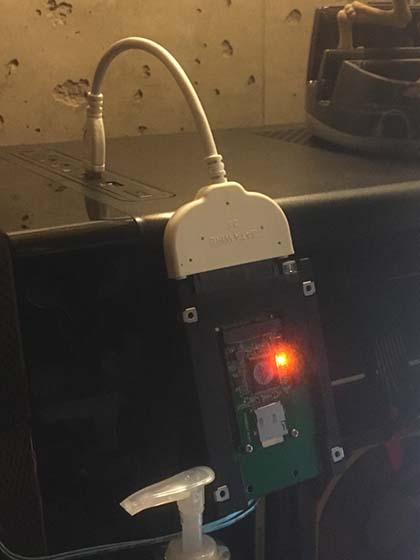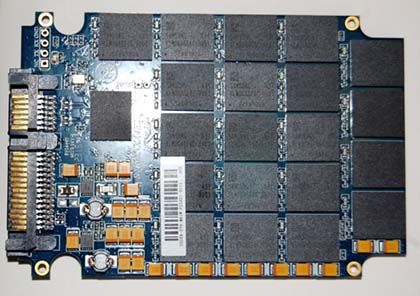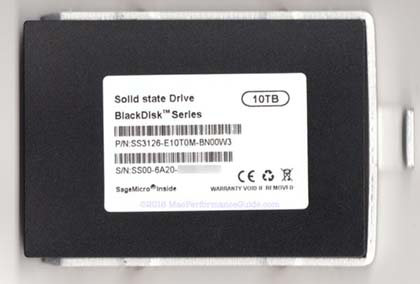E-WASTE FROM THE AETHER: TESTING FOUR SD CARD ADAPTERS
Published:
by:
Colonel Unicorn
Estimated reading time: ~31 minutes
E-Waste From the Aether: Testing Four SD Card Adapters
An entire industry in China exists to generate e-waste for the bare minimum amount of money and sell it to hashtag The West for hilariously high margins. Amazon announced last year that 58% of sales on the site come from third-party Amazon Marketplace sellers, and an estimated half of them are based out of China. Every time Amazon makes four sales, sellers based in China make three. Amazon has been actively recruiting them, and why not? Amazon gets a cut of every sale, and Amazon makes a sale because the items cost ever-so-slightly less1, and they cost less because these are the cheapest, bottomest-of-the-barrel electronics imaginable. It doesn’t matter that the name brand USB-C cable actually folows the spec and charges at the full 3 A while the cheap one you grabbed takes ten times as long to charge because you saved a buck and got Prime shipping, you brain genius bargain hunter.
It’s impossible to distinguish any of these sellers for the most part. Take a look:
These are product photos from separate listings by different sellers. They are sold by Bewinner, Almencla, Lechnical, and Mustpoint for between $8 and $18. I can’t even tell you what order the pictures are in because I forgot to note which was which when I saved them. The only one that’s any different is Bewinner’s. The label in the corner reads “TF2MSATAVA0” rather than “TF2MSATAVA1,” and there are two small parallel capacitors in a corner rather than one large capacitor.
And that’s it. Only one of the four is any different and it’s an earlier revision of the same adapter. There could be more differences, but all I can spot are a label and a cost reduction. Actually, I don’t think the PCBs are any different either; none of the traces appear to be routed differently. Does the angle of the quality control sticker count? Yeah, probably not.
Any of those sellers could disappear tomorrow and nobody would notice or care. I don’t have brand loyalty to Bewinner. Who the hell is behind Lechnical? Do any of these companies (can they even be considered companies?) have logos? I don’t know. They’re completely interchangeable. Two more sellers will replace them, like a Hydra fueled by consumerism that spews toxic fumes of flux and not-entirely-lead-free solder.
It’s hard to think of a comparison that fits. I could talk about how reference graphics cards are interchangeable. Sapphire sold me my RX 480, and it’s identical to the reference boards sold by XFX and Gigabyte and ASUS and so on, but I can actually distinguish those companies. They have logos. They have customer support teams. They make things, even if it’s as simple as a modified VBIOS on a reference board. I think that’s the fundamental difference: these Chinese sellers are interchangeable because they do not create. They are sellers, nothing more. They are middlemen for my anglophone self who does not wish to negotiate buying a minimum order of a thousand SATA-to-SD card adapters. They are homogeneous mom & pop stores localized entirely within my web browser. They are fly-by-night operations with zero accountability.
But somebody overseas is creating these devices. There are companies dedicated to designing and producing these bizarre and often nonsensical adapters. Somebody thought, “SSDs are too expensive; what if we could use cheaper commodity flash devices?” and daisy-chained several signal converters together to make a SATA-to-SD card adapter. I respect them for it, because they are the closest we have to xkcd #14062:
Though in reality, they’re a lot closer to this:
Test Setup and Components
I spent one-hundred United States dollars and forty-three United States cents on four identical 32 GB Silicon Power micro SD cards and four different SD card adapters and benchmarked them. These converted:
- Mini PCIe to 2x micro SD
- SATA to SD
- SATA to 4x micro SD
- mSATA to micro SD
To get baseline performance, I also ran benchmarks of these micro SD cards in my normal USB 3.0 card reader, which uses a Genesys Logic GL3223 controller (ironically, this card reader was also sourced from a Chinese seller). For fun I threw in a laptop hard drive from 2012, an old 1 TB Western Digital Scorpio Blue.
Software used was CrystalDiskMark 6.0.2 and HDTune Pro 5.60. CrystalDiskMark’s sequential benchmark was used with eight threads and a queue depth of 32 entries. The 4K benchmarks were run with eight threads and queue depths of 1, 8, and 32 entries. Random and compressible (i.e., 0 fill) data was used. Nine iterations of the 50 MB test size and five iterations of the 1 GiB test size were used. In total, each complete CrystalDiskMark run contains 32 data points.
HDTune’s read and write benchmarks, including burst rate and access time, were used. Graphs are presented as-is.
Windows write caching was disabled; I am trying to benchmark the performance of SD card adapters, not my RAM. Disks were formatted as FAT32 when running CrystalDiskMark, with the exception of the HDD and 4x micro SD adapters that were formatted as NTFS. The adapters were connected via the Z97 PCH’s native SATA III and USB 3.0 ports.
Baseline Results
All four micro SD cards were tested in CrystalDiskMark, and the mean and standard deviation of each benchmark is as follows. This data will be simplified though; using 32 values for every test is excessive.
| Four Micro SD Cards - CrystalDiskMark, MB/s | |||||
|---|---|---|---|---|---|
| Test Size | 1 GiB | 50 MB | |||
| Data Type | Random | Compressible | Random | Compressible | |
| Read | Seq. Q32T8 | 95.8 ± 0.6 | 95.7 ± 0.5 | 93.4 ± 0.6 | 93.5 ± 0.4 |
| 4KiB Q32T8 | 8.59 ± 0.02 | 8.30 ± 0.03 | 10.59 ± 0.22 | 10.17 ± 0.05 | |
| 4KiB Q8T8 | 8.40 ± 0.01 | 8.14 ± 0.02 | 10.05 ± 0.04 | 9.62 ± 0.01 | |
| 4KiB Q1T8 | 8.33 ± 0.02 | 8.04 ± 0.02 | 9.00 ± 0.04 | 8.74 ± 0.05 | |
| Write | Seq. Q32T8 | 22 ± 4 | 22 ± 5 | 37 ± 9 | 38 ± 7 |
| 4KiB Q32T8 | 4.4 ± 0.1 | 4.2 ± 0.5 | 4.2 ± 0.5 | 4.1 ± 0.6 | |
| 4KiB Q8T8 | 4.3 ± 0.2 | 4.1 ± 0.4 | 4.3 ± 0.5 | 4.4 ± 0.5 | |
| 4KiB Q1T8 | 4.0 ± 0.3 | 4.2 ± 0.5 | 4.3 ± 0.4 | 4.2 ± 0.6 | |
No consistent or meaningful differences exist between benchmarks using random and compressible data.
Sequential throughput was highest, as expected. Sequential reads are about 2 MB/s faster than writes, and this is significant using a one-tailed T test to 90% confidence.
The standard deviation of sequential write operations is quite high due to the large spread. Using a 1 GiB test size, the slowest result was 16 MB/s and the fastest was 28 MB/s. Using a 50 MB test size, the slowest result was 28 MB/s and the fastest result was 49 MB/s. No outliers were found using a Q test to 90% confidence, however.
Random reads were somewhat faster using the smaller test size. Random writes were too variable to show any trend between throughput and test size. Random reads and writes appear to weakly correlate with queue depth (i.e., more entries in the queue slightly increase throughput), though this is statistically insignficant.
HDTune read and write benchmarks were run and are presented below.
HDTune benchmarks are organized by logical block addresses on the disk. With HDDs, this corresponds to the physical location of the block, and the x-axis of the graph represents nearness to the spindle. With flash memory, there is no meaningful difference between any block address, so the x-axis of the graph loosely corresponds to time and is influenced by aspects such as caching.
The average read rate is somewhat slower than the sequential read results obtained in CrystalDiskMark. There is very little variation, with read results deviating from the mean by no more than 0.3 MB/s at any time. The average access time is 0.3 ms and does not exceed 0.4 ms.
The write benchmark is much messier. About fifty peaks and valleys are observed, ranging from 8 MB/s to 55 MB/s; the minimum of 0.9 MB/s occurs briefly and only at the start of the test. The average access time is 1 ms, though it does exceed 2 ms at least one time. Unlike the read test, the burst rate is higher than the average data rate, indicating some kind of write caching. This may help explain the inconsistency in write benchmarks seen in CrystalDiskMark.
The HDD, a WD10JPVT, was benchmarked in CrystalDiskMark. Sequential benchmarks have been ignored. The average of the random and compressible results was taken.
| WD10JPVT - CrystalDiskMark, MB/s | |||
|---|---|---|---|
| Test Size | 1 GiB | 50 MB | |
| Read | 4KiB Q32T8 | 1.50 | 1.66 |
| 4KiB Q8T8 | 1.46 | 1.64 | |
| 4KiB Q1T8 | 1.13 | 1.30 | |
| Write | 4KiB Q32T8 | 0.99 | 2.02 |
| 4KiB Q8T8 | 1.32 | 1.97 | |
| 4KiB Q1T8 | 1.09 | 1.96 | |
The smaller test size is faster than the larger test size in all benchmarks, with an average throughput increase of 13% while reading and 78% while writing. This can probably be attributed to the drive’s 8 MB cache handling the smaller test size more effectively, as its capacity constitutes a larger portion of the test data.
As expected from a mechanical hard disk drive, the data rate decreases approximately-linearly as the recording heads move closer to the spindle, from a maximum of 115 MB/s to a minimum of 55 MB/s.
Access times are poor, taking an average of about 16 ms to complete an operation. Note that read access time increases as the recording heads move closer to the spindle while write access times are consistent regardless of where the recording heads are physically located. Additionally, a floor is visible under 1 ms.
The plots have essentially the same shape including precise locations of peaks and valleys. The write plot is simply 3 MB/s slower.
Mini PCIe to 2x Micro SD
The Mini PCI-EExpress PCI-E to 2 TF for Micro SD Dual Memory Adapter Card Converter Reader for Laptop by Mustpoint for $15.99 (plus tax).
In 2014, I thought it would be neat to add USB 3.0 to my laptop. Search results revealed an abundance of mini PCIe cards like this dual micro SD adapter that nobody should actually buy.
Six years later, I actually bought it.
This was the first of the four adapters that I tested. It shipped in a bare cardboard box and came in an anti-static bag. Accessories were contained in a small plastic bag.
This is useful and allows a half-size mini PCIe (or mSATA) card to be extended to full-size card. It’s just a stamped metal plate, nothing fancy, but it’s the kind of accessory I’d toss in a spare parts bin, and it would come in handy in no less than five years.
It also included four screws. Note that three of them are countersunk and the fourth is a simple machine screw. It’s the little things that cut costs.
These are annoying micro SD slots. I do not like them. They’re finnicky and feel like they’ll bend in my fingers. There are two LEDs - power and status - and they are painfully bright. I have to question why these are here for any reason except for diagnostics since they’re on a mini PCIe card. Odds are good that it’ll get buried inside a case, so they just suck power and add to the BOM.
This is the only adapter that uses a double-sided PCB. The controller is an Alcor Micro Corporation AU6472BL, and I cannot find the datasheet. But make a note of the 8th and 9th pins of the edge connector. They’ll be important later.
Two of the micro SD cards were tested in CrystalDiskMark. Random and compressible results have been combined.
| Mini PCIe Adapter - CrystalDiskMark, MB/s | |||
|---|---|---|---|
| Test Size | 1 GiB | 50 MB | |
| Read | Seq. Q32T8 | 20.55 ± 0.07 | 20.59 ± 0.08 |
| 4KiB Q32T8 | 5.459 ± 0.005 | 6.5 ± 0./2 | |
| 4KiB Q8T8 | 5.377 ± 0.002 | 6.31 ± 0.02 | |
| 4KiB Q1T8 | 5.323 ± 0.005 | 5.65 ± 0.08 | |
| Write | Seq. Q32T8 | 10.5 ± 0.8 | 11.0 ± 0.3 |
| 4KiB Q32T8 | 3.2 ± 0.2 | 3.4 ± 0.1 | |
| 4KiB Q8T8 | 3.1 ± 0.2 | 3.4 ± 0.1 | |
| 4KiB Q1T8 | 3.3 ± 0.1 | 3.3 ± 0.2 | |
In CrystalDiskMark, the adapter gets 20 MB/s reads and 11 MB/s writes sequentially. This is a substantial decrease from the 95 MB/s sequential results from earlier, and I assume these are indicative of the controller’s upper throughput limits.
The large test data size appears to have lower throughput in random reads, but any differences in random writes are within the standard deviations. Compared to the normal card reader, random reads drop by about 3 MB/s and random writes drop by about 1 MB/s.
Two micro SD cards were tested in HDTune, and one read and write result each are shown below.
Access times are no worse than the normal adapter at about 0.3 ms read and 1.1 ms write. However, a few outliers do exist in the write test above 30 ms.
Average read and write speeds are a bit worse than CrystalDiskMark’s sequential results as expected. The same sub-10 MB/s valleys are seen in the write test. Peaks do not reach the read speed; this adapter may simply be slower when writing than reading.
One final test involved benchmarking the micro SD cards simultaneously in CrystalDiskMark. This test used random data and a 1 GiB test size. The results from the single-card benchmarks are included for reference. The runs were not completely synchronized, so this data may be inaccurate.
| Mini PCIe Adapter - Simultaneous, MB/s | |||||
|---|---|---|---|---|---|
| Disk | A | B | Sum | Single | |
| Read | Seq. Q32T8 | 19.6 | 14.6 | 34.3 | 20.55 ± 0.07 |
| 4KiB Q32T8 | 2.44 | 5.38 | 7.82 | 5.459 ± 0.005 | |
| 4KiB Q8T8 | 3.55 | 3.25 | 6.80 | 5.377 ± 0.002 | |
| 4KiB Q1T8 | 3.17 | 3.01 | 6.27 | 5.323 ± 0.005 | |
| Write | Seq. Q32T8 | 8.10 | 10.1 | 18.2 | 10.5 ± 0.8 |
| 4KiB Q32T8 | 2.26 | 2.80 | 5.06 | 3.2 ± 0.2 | |
| 4KiB Q8T8 | 1.58 | 1.63 | 3.20 | 3.1 ± 0.2 | |
| 4KiB Q1T8 | 1.68 | 1.62 | 3.30 | 3.3 ± 0.1 | |
The speed between the host and the adapter appears to be limited to 35 MB/s; a higher throughput could not be achieved.
In high-queue-depth operations, the sum of the throughputs of two micro SD cards is higher than the throughput of an individual card. This suggests that the SD card is the bottleneck in the previous individual card test rather than the controller.
Random, low-queue-depth reads are barely faster simultaneously, and writes are about the same simultaneously. This suggests that the controller is the bottleneck, not the SD cards.
Why so slow then? Even the slowest PCIe lane is good for 250 MB/s full-duplex; there’s enough bandwidth for both cards to run at full speed simultaneously, right?
Haha, nope! Here’s the setup I used to test the card:
That’s not a PCIe adapter.
Mini PCIe actually carries two signals. Pins 23, 25, 31, and 33 connect the Tx and Rx differential pairs of a PCIe lane. Pins 36 and 38 on the other side of the board connect the differential pair of a USB 2.0 port. Wanna guess which bus the 8th and 9th pins connect to?
USB 2.0 has a 480 Mb/s bus rate, but due to line code and packet size, the maximum throughput for usable data is under 43 MB/s. Reaching 35 MB/s on a USB mass storage device is pretty good. The use of USB rather than PCIe is noted in the item’s description, so points for that I guess. Thanks for not misleading your customers by omission?
Even though I can’t find the AU6472BL’s datasheet, I can find the datasheet for another member of the family, the AU6475. This chip was used in USB 2.0 multi-LUN memory card readers. I can’t tell exactly how it works, but it appears that this chip does provide two channels that are able to support two SD cards simultaneously.3 I assume the AU6472BL works similarly. HDTune screenshots show a “Generic SD/MMC/MS/xD” device and a “Generic MicroSD/M2” device, so presumably these channels can support multiple types of flash cards. I do think it’s interesting that one slot is designated for full-size cards while the other is designated for smaller variants.
Overall, I would recommend avoiding this adapter. Even if we accept that it’s just a USB card reader, it’s not very good. I could not get hot plugging to work. The entire device had to be power cycled to recognize a new card, and the style of micro SD slot used doesn’t help either. Maybe you can get it to work if you have an empty mini PCIe slot in a system running an operating system like FreeNAS or PFSense that can run from a USB stick? You can have the OS and a backup disk in one slot, and it’s internal, and I guess that’s a use.
But this does the exact same job, and it has no logic, and it’s faster, and it’s cheaper, and it’s not even necessary on certain motherboards. This dual micro SD adapter does not need to exist.
It only gets worse from here.
SATA to SD
The ASHATA Memory Card Adapters,22MB/s Fast Transmission SD/SDHC/SDXC/MMC Memory Card to 2.5in 7+15P SATA Converter Adapter Suitable for DOS,Windows 98SE,Me, 2000,XP and Vista,Linux,MAC OS. by ASHATA for $17.79 (plus tax).
I knew I was in for a bad time the moment I saw this. It was shipped in an anti-static bag and nothing more. No box, no bubblewrap. The only padding was Amazon’s envelope, which is a ballsy move, but packaging of your own cuts into profit margins.
The back of the PCB is completely bare. This is definitely a cost-cutting move since it is significantly cheaper to populate one side of a PCB than both.
There are two chips visible on the front. The large chip is an FC1307A that seems to be made by a company called Sintechi, and the small chip is a JM20330 by JMicron. No spoilers, but you can already tell something weird is going on. Both SATA and SD use only four pins for data transmission, but there is a massive amount of wiring between the two chips.
Almost like there’s a parallel bus.
CrystalDiskMark results are shown below after runs on two micro SD cards. Tests using random and compressible data have been averaged. Large and small test sizes have been averaged. All random results have been averaged. The standard deviations are shown when applicable.
| SATA to SD Adapter - CrystalDiskMark, MB/s | ||
|---|---|---|
| Read | Seq. Q32T8 | 4.063 |
| 4KiB Q*T8 | 2.88 ± 0.05 | |
| Write | Seq. Q32T8 | 3.81 ± 0.09 |
| 4KiB Q*T8 | 3.3 ± 0.1 | |
Sequential reads are 4.063 MB/s, except for one benchmark that reached a blazing 26 kB/s faster, which can be discarded with a Q test anyway, which I did, thank you very much. Sequential writes are slower, but not by much. Randoms are even slower, but it barely matters.
Large, small, compressible, random. Doesn’t matter. 4 MB/s. That’s the limit. It will not exceed this speed.
Average read and write are a bit slower than CrystalDiskMark’s sequential results, as usual. Read results flatline at 3.9 MB/s with little variation. A few peaks are seen in the write graph, but there are far fewer than before. Latency is higher than the baseline, by about 30%, though I am not sure if this is statistically significant. That translates to an additional 0.1 ms read and 0.4 ms write.
It’s not much better than the HDD. Random performance is better, but barely. Spinning rust is within spitting distance of what is ostensibly a flash SSD. Relative performance in CrystalDiskMark is given below.
| SATA to SD Relative to WD10JPVT | |||
|---|---|---|---|
| Test Size | 1 GiB | 50 MB | |
| Read | 4KiB Q32T8 | 1.90 | 1.77 |
| 4KiB Q8T8 | 1.95 | 1.79 | |
| 4KiB Q1T8 | 2.51 | 2.22 | |
| Write | 4KiB Q32T8 | 3.28 | 1.62 |
| 4KiB Q8T8 | 2.38 | 1.71 | |
| 4KiB Q1T8 | 2.93 | 1.70 | |
It’s not good. An all-eletronic, mechanical-bits-free flash SSD is only about two to three times as fast as a low-speed, 8-year-old HDD. Random performance, the workloads in which flash devices are supposed to excel, is barely faster than a hard disk drive. And unlike an HDD, this adapter doesn’t offer sequential speeds as a consolation prize.
This is unusably bad.
Consulting the datasheets reveal how it works but not why it’s so slow. The JM20330 is a SATA to PATA bridge, and the FC1307A is a CompactFlash to SD adapter. Since CompactFlash cards can run in ATA mode and are essentially tiny PATA SSDs, the two adapters can be chained. This occurs within the board, hence the large parallel bus visible between the chips. The SD card is converted to PATA which is converted to SATA which does indeed create a SATA SSD. It’s extremely shit and outperformed by an X-25M, but it is technically a SATA SSD.
The JM20330 was released in 2003 if we go by the datasheet’s publication date. SATA was only three years old, and lots of PATA drives were still floating around, so it made sense to produce a bridge that allowed the use of old drives in new systems. It supports ATA/ATAPI-7 and UDMA 6, giving it a 133 MB/s parallel ATA bus and a 150 MB/s serial ATA bus. That shouldn’t be the cause of any slowdowns4.
The FC1307A appears to support UDMA 6 on the host side, the same as the JM20330 (though the datasheet only claims ATA/ATAPI-6 compatibility). On the device side it supports SDHC 2.0, which allows cards to run at 25 MB/s. This still doesn’t explain the slowdown because that’s six times the transfer rate benchmarked5.
And individually, neither chip is slow. A series of tests indicates that the FC1307A is able to sustain 24 MB/s6, and although there are no real benchmarks of the JM20330 by name, there is a claim that it can hit 30 MB/s with a hard disk drive7. It’s definitely the combination of the two chips that’s causing the issue, and JMicron’s apparent inability to make good chips involving SATA doesn’t help.
Avoid this. Never buy this. This is a terrible, terrible piece of e-waste. It never should have been made, and it was made to be tossed into a landfill.
SATA to 4x Micro SD
The SATA Card PCI-e PCI Express to SATA 3.0 III 3 SSD PCIe SATA 8 Ports Expansion Board Card Adapter Raiser with Low Profile Bracket by Mustpoint for $19.99 (plus tax).
This thing is cheap. The sticker on the case has three checkboxes for the number of micro SD cards supported and none are checked off. (“TF” is short for “TransFlash” and is an alternate name for micro SD.) Not a good sign for quality control. No manual was included, but the QR code on the front doesn’t link to a PDF. When I scanned it with my phone, Safari opened up and searched the string “2.5” SATA TF to SATA.” They aren’t even providing documentation digitally. The manual is a fucking Google search! The only documentation is the product description on the Amazon page, but as far as I know this can be updated by sellers whenever they please, which means it isn’t permanent.
The case is made of flimsy plastic, and the PCB is held in place by friction alone. I expected to see clips or posts molded into the plastic if not standoffs and screws, but it is devoid of any structure. Presumably the manufacturer has reused this case for the mythical boards with one and ten micro SD slots.
Again, it’s a single-sided PCB. Gotta get those costs down.
On the front, we see two chips.
…Two chips.
Oh no.
Corners were cut here. One transistor is misaligned and a blob of solder is stuck to the ring around one of the holes. I think a larger transistor was intended to be used but they switched to a cheaper, smaller component to cut costs, allowing the transistor to float during reflow rather than cling to the pad.
Installation was easy. The micro SD cards clicked into the four slots and appeared as an unformatted 128 GB disk in Windows, which was easily formatted as NTFS. The RAID array is handled transparently by the controller.
Results ought to be familiar.
| SATA to 4x Micro SD Adapter - CrystalDiskMark, MB/s | ||
|---|---|---|
| Read | Seq. Q32T8 | 4.063 |
| 4KiB Q*T8 | 2.95 ± 0.09 | |
| Write | Seq. Q32T8 | 3.75 ± 0.09 |
| 4KiB Q*T8 | 2.3 ± 0.1 | |
Performance is less than or equal to the previous adapter across the board. That same 4 MB/s limit is there; I had hoped for 16 MB/s, but nupe! No such luck. The drop in random speeds bring it even closer to the HDD.
Imagine that! An old HDD is preferable to a RAID 0 SSD.
I hate it so much.
Somehow, access times are better. They’re still worse than the baseline, but they’re not as bad as the last adapter. It’s a low bar to clear but they did it! The peaks and valleys in the write test appear to have more variation than before, probably because multiple cards are in use. I assume they have write caches, but I am not sure.
This adapter uses the same two chips as the last one, explaining the at-best-identical performance. The FC1307A supports not just one but up to four SD cards and automagically stripes them. All I had to do was slap in the micro SD cards and an unformatted 128 GB disk appeared in Windows. If you see a CompactFlash adapter with multiple SD card slots, this chip may be in use. CompactFlash is often more expensive than SD and many cameras will only accept CompactFlash, e.g. the Nikon D100 with which these photos were taken, so an adapter you can pop a couple cheap micro SD cards into can be a useful gadget. Like the JM20330, it has valid uses. But this ain’t one of them.
I have no idea how to explain why this combination is so slow. Something is creating a 4 MB/s hard throughput limit. This adapter is absolute garbage and offers all the downsides of RAID 0 with none of the benefits. It belongs in a landfill, not a computer.
mSATA to Micro SD
The Mustpoint Micro SD TF Card to Mini PCI-E mSATA SSD Adapter Converter for PC by Mustpoint for $17.99 (plus tax).
There’s not much of note on the back. Looks like a bunch of test points and routing the bottom of the edge connector to the top of the board but very few connections.
It’s pretty straightfoward. The controller is connected to the SATA host, and a few traces wrap around the edge to the SD slot. No parallel buses this time.
The controller is a Sage Microelectronique S682. Unlike the previous two trash adapters, this is a single-chip solution. SATA to SD directly. No PATA shenanigans in the middle.
Let’s take a look at the performance!
Haha just kidding it was dead on arrival. When I plugged it in, the power light turned on and the status light began flashing. Windows refused to recognize it. I tried my USB to SATA bridge. Still not recognized. I’m calling it dead on arrival. It’s just not worth the effort to troubleshoot.
And that’s too bad, because this is actually a promising little device and the most interesting of all three [sic] of the adapters I got. Sage is a chipmaker based out of China, and there’s a chance you’ve seen their work before. Remember this?
That’s not a Sage S682, but it is a close relative. Sage designed the S681, S682, and S685, which were able to connect several eMMC chips or SD cards to a SATA host bus. The S681 connects devices using ten channels, the S682 using five, and the S685 using four8. A similar chip, the S881, could connect five flash devices to a PCIe host instead. Mr. Tech Tips’s video showcases the S681 in action, while my piece showcases the S682 decidedly not in action. And that’s ok, because benchmarking my adapter’s single micro SD slot is doing the S682 a disservice.
Sage began producing the S681 in October 2012 with the goal of producing low-cost, high-capacity solid-state drives9, bragging in November 2014 that their design could produce 5 TB SSDs while other companies were limited to 1, maybe 2, TB at the time10. These extreme capacities could be achieved by using high-capacity commodity eMMC chips or SD cards. Use of commodity flash devices simplified both hardware and firmware. The pin count per flash chip was reduced from a claimed 17 to 12 by switching from standard NAND chips to complete eMMC packages9. And because eMMC chips were used, the S681 did not need to directly interface with any NAND flash. Remember, eMMC chips contain their own flash controllers; they themselves are complete SSDs. The S681 behaved more like a RAID controller than a traditional SSD controller since it could completely ignore wear levelling and error correction, and it was completely agnostic to the type of flash used11.
Sage was quite proud of this idea and gave two talks at Flash Memory Summit 20149,11. I can’t blame them, it’s a neat concept and resulted in the densest SSDs on the market by a long shot. They didn’t just make chips either. By 2015, Sage released a 5 TB SSD12.
Source12: Sage Micro via “Chinese SSD maker eyes U.S. market for 8TB drive intro” from Computerworld
This drive appears to be using an S681 and connecting multiple eMMC chips to each channel. The chips are 128 GB KLMDGAGEAC-B001 eMMC chips from Samsung. Forty would be needed to reach 5 TB. That’s as many as four tens, and that’s dense. But only twenty chips are visible in this image. I assume another twenty are on the other side of the board but I do not know for sure; there are very few photographs of these drives in the wild. If there are indeed forty eMMC chips, then the S681 can connect to four eMMC chips per channel. The edges of the board are stuffed with capacitors for power-loss protection, and the connector appears to be SAS, indicating that the target market is datacenter customers.
Source12: Sage Micro via “Chinese SSD maker eyes U.S. market for 8TB drive intro” from Computerworld
This is a different drive using a slightly different PCB. A Marvell chip is seen near the SAS connector. I cannot tell for sure because the resolution is too low, but it is likely an 88SF9110. This is SAS to SATA bridge that can connect to two SAS hosts and one SATA device, allowing standard SATA disks to be used with redundant SAS connections. Another chip in the family, the 88SF9210, can connect to two SATA devices13. I do not know how this particular drive was designed and the resolution is too low to be certain of the chip in use. There’s a chance that four eMMC devices can be attached to each channel and this is using one S681 with redundant SAS connections.
The S681 wasn’t the end. The following year, Sage released a new SATA III controller and designed an SSD around it. Meet the BlackDisk.
Source14: “OWC 40TB SSD” from Mac Performance Guide
In November 2016, OWC began selling a Thunderbolt DAS for Macs with four of them for a total of 40 TB of flash storage.
It cost TWENTY-EIGHT THOUSAND DOLLARS.
Yes, for the price of a new car or twenty 1998 Corollas, you could own your very own 40 TB all-flash DAS.
And it was shockingly average. Sequential performance in RAID 0 was 1425 MB/s read and 1192 MB/s write, working out to 356 MB/s read and 298 MB/s write per BlackDisk. These speeds barely justify the use of SATA III. The Mac Performance Guide review sadly did not test random performance, but it’s safe to assume that it was not particularly good given the use of eMMC chips and the previous generation’s mediocrity14.
That’s probably why it failed. Crunch the numbers for a second. That particular OWC DAS configuration cost $27700, and an empty box could be bought for about $450, which is a laughably small portion of the price when using these disks. The disks cost $27250 total and $6810 apiece. With mediocre performance and a cost of nearly $700 per terabyte, there wasn’t really a market for it. The idea of a cost-effective SSD using commodity memory just didn’t pan out.
$700 per terabyte in 2016 wasn’t revolutionary; it was playing catch-up. Sage admitted that they couldn’t undercut companies such as Intel or Micron, and they’re right. Micron’s client brand Crucial released the M500 in spring 2013, with an MSRP of $600 for 960 GB15. The M500 wasn’t exactly fast by 2013’s standards, but it was a hell of a lot faster than RAID 0 eMMC. Earlier in 2016, Samsung had released a 4 TB version of the 850 EVO using their new 48-layer flash. With an MSRP of $1500, it cost under $400 per terabyte. And it was fast, far faster than the BlackDisk could ever hope to be. Sequential performance was bottlenecked by the SATA III bus, and random performance was an order of magnitude better than the BlackDisk16. Sure, there’s a premium for density, and it did cost more than four times as much as a 1 TB 850 EVO, but I also have to assume that a theoretical 10 TB 850 EVO would have cost closer to $4000 than $7000.
Sage’s only remaining niche was making dense drives for users who were not concerned by random performance and needed no more than mediocre sequential performance.
Sage’s niche, then, was already filled by the humble hard disk drive and its spinning rust.
Because in the end, that’s what Sage was competing with. Spinning rust. It’s insulting to say that the BlackDisk was competing with SSDs. Sage was playing checkers, but Samsung, Intel, Micron, and every other manufacturer in the industry had been playing chess for years. Why spend $7000 on a 10 TB, glued-together RAID array when you could spend $500 on a proper hard disk drive17? Oh, sure, it’s a bit slower, but if you were seriously considering Sage, you weren’t ever considering performance.
I’d love to get my hands on a BlackDisk, but they don’t really exist. I found two reviews online (the one not mentioned in this article made jokes about Overwatch porn) and no secondhand listings for either the SSD itself or the populated enclosure. I would not be surprised if OWC failed to sell a single enclosure containing four of these disks. Hit me up if you find one, I guess, even if it’s broken. I can still take pictures.
Conclusion
I spent one-hundred dollars and forty-three cents on this article, and I am going to get seventy-six dollars and seven cents back once I return these useless, broken adapters. I could put Amazon Affiliate links in this article (I mean, I’d need to become an affiliate first, but you get the point) so you could buy these and I’d get a cut, but I refuse to encourage or enable the sale of any of these adapters. Even putting the titles of the listings in this article is doing too much good for their SEO, but it’s hard to highlight the keyword-saturated spam otherwise.
DIY SSDs just don’t work in reality regardless of scale. Even if we ignore the abysmal performance of the JM20330/FC1307A adapters, they just cost too much. SD cards may be cheaper per byte than SATA SSDs, but they are not cheaper by enough to offset the cost of the adapter, especially in this wonderful era of sub-$100 terabyte SSDs. Scaling up to extreme-density drives doesn’t help either. Using commodity eMMC chips wasn’t enough for Sage to undercut real SSDs made by quite any other company in the datacenter market. The only thing Sage had over their competition was per-disk density, and HDDs anhilated them in cost.
Worse, these are only good as client drives at best. Sage never bothered with any sort of ECC because it was handled by the eMMC controllers, but real RAID controllers in datacenters do use ECC. They cut corners, yet Sage ironically called them enterprise drives. The FC1307A and AU6472BL are nothing more than consumer-grade memory-card-reading USB mass storage devices. It’s safe to assume that the consumer-grade, race-to-the-bottom SD card you got at Best Buy has no durability to speak of. Remember, these are designed for writing photos and reading music on your phone. Durability has been a problem with cards holding an operating system and especially a swap file for single-board computers such as the Raspberry Pi, and an x86 desktop PC will wear out the flash even faster.
SD and eMMC can never substitute a proper SATA SSD. They couldn’t do it in 2012, and they absolutely cannot do it in 2020. Just get a proper SATA SSD.
It’ll cost less anyway.
- Bryant, Dave. “How Chinese Sellers are Manipulating Amazon in 2019.” Ecomcrew. Aug. 28, 2018. Accessed Feb. 9, 2020. https://www.ecomcrew.com/chinese-sellers-manipulating-amazon/ [return]
- Munroe, Randall. “Universal Converter Box.” xkcd. Aug. 11, 2014. Accessed Feb. 9, 2020. https://xkcd.com/1406/ [return]
- “AU6475: USB2.0 Multi-LUN Flash Card Reader Controller.” Alcor Micro. Dec. 2007. Accessed Jan. 25, 2020. https://pdf1.alldatasheet.com/datasheet-pdf/view/219001/ETC2/AU6475.html [return]
- “JM20330: Serial ATA Bridge Chip Datasheet.” JMicron. July 2006. Accessed Jan. 24, 2020. http://www.users.on.net/~fzabkar/temp/JM20330_Spec_Rev.-2.3.pdf [return]
- “FC1307A: Multi SD-CF/IDE/SATA/USB Adaptor.” Sintechi. Aug. 30, 2012. Accessed Jan. 25, 2020. http://www.kwanghua.cn/cn/DowsnLoad.aspx?srcfile=/GSUpLoadFiles/20121227/2012122715531404.pdf [return]
- Gough, Liu. “Tested: Generic ‘Sintechi’ FC1307A-based SD to IDE Adapter (SD35VC0).” Gough’s Tech Zone. Feb. 3, 2019. Accessed Feb. 9, 2020. https://goughlui.com/2019/02/03/tested-generic-sintechi-fc1307a-based-sd-to-ide-adapter-sd35vc0/ [return]
- Lofstrom, Keith. “SATA Drives.” Dirvish Wiki. Jan. 24, 2011. Accessed Feb. 9, 2020. http://wiki.dirvish.org/SataDrives [return]
- “S681, S682, S685.” Sage Micro. Accessed Feb. 9, 2020. http://www.sage-micro.com/us/portfolio-items/s681-s682-s685/ [return]
- Luo, Jianjun. “New SSD Controller with eMMC Array.” Talk at Flash Memory Summit 2014. Aug. 6, 2014. Accessed Jan. 25, 2020. https://www.flashmemorysummit.com/English/Collaterals/Proceedings/2014/20140806_E21_Luo.pdf [return]
- “New Sage Controller IC Enables SSDs with Densities up to 5T.” Embedded. Nov. 3, 2014. Accessed Feb. 9, 2020. https://www.embedded.com/new-sage-controller-ic-enables-ssds-with-densities-up-to-5t/ [return]
- Tsu, Chris. “High Density SSD Structure with RAID.” Talk at Flash Memory Summit 2014. Aug. 7, 2014. Accessed Jan 25, 2020. https://www.flashmemorysummit.com/English/Collaterals/Proceedings/2014/20140807_302B_Tsu.pdf [return]
- Mearian, Lucas. “Chinese SSD maker eyes U.S. market for 8TB drive intro.” Computerworld. Oct. 13, 2015. Accessed Feb. 9, 2020. https://www.computerworld.com/article/2990446/chinese-ssd-maker-eyes-us-market-for-8tb-drive-intro.html [return]
- “Marvell 88SF9210/9110/9118: 6Gb/s SAS to SATA Bridge Chips.” Marvell. 2011. Accessed Feb. 9, 2020. https://www.marvell.com/storage/system-solutions/assets/Marvell-88SF9210-911X-Product-Brief.pdf [return]
- “OWC 40TB SSD.” Mac Performance Guide. Nov. 25, 2011. Accessed Feb. 9, 2020. https://macperformanceguide.com/Reviews-OWC-Thunderbay4Mini_40TB_SSD.html [return]
- “Crucial M500 SSD Now Available.” Micron. Apr. 9, 2013. Accessed Feb. 9, 2020. https://investors.micron.com/news-releases/news-release-details/crucial-m500-ssd-now-available [return]
- Tallis, Billy. “The Samsung 850 EVO 4TB SSD Review.” AnandTech. July 11, 2016. Accessed Feb. 9, 2020. https://www.anandtech.com/show/10481/the-samsung-850-evo-4tb-ssd-review [return]
- Ung, Gordon. “Seagate’s 10TB Barracuda Pro is the World’s Largest Consumer Hard Drive.” PC World. Accessed Feb. 9, 2020. https://www.pcworld.com/article/3096292/seagates-10tb-barracuda-pro-is-the-worlds-largest-consumer-hard-drive.html [return]


